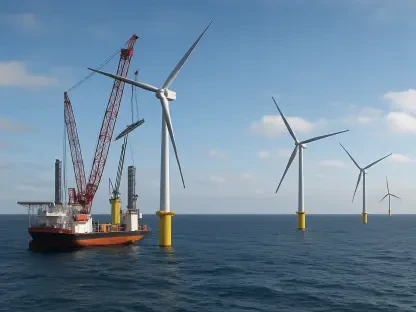Today, we’re thrilled to sit down with Christopher Hailstone, a seasoned expert in energy management and renewable energy, and our go-to Utilities specialist. With a deep understanding of electricity delivery, grid reliability, and security, Christopher offers unparalleled insights into the rapidly evolving power market. In this interview, we dive into the recent landmark transactions involving NRG Energy and LS Power, exploring how these deals reshape the U.S. energy landscape. We’ll unpack the implications of NRG’s massive acquisition of gas-fired and demand response assets, the dynamics of market competition, and the broader trends driving growth in the power sector, as well as LS Power’s strategic pivot toward renewable energy with their wind asset purchase.
Can you walk us through the key aspects of NRG Energy’s acquisition of LS Power assets?
Absolutely. NRG Energy is acquiring a significant portfolio from LS Power in a deal valued at around $12 billion. This includes 12.9 GW of gas-fired power plants spread across regions like PJM, New York, Texas, and New England, as well as CPower, a demand response company. This transaction essentially doubles NRG’s generating capacity in the U.S., making it a much larger player in the independent power producer space. It’s a transformative move that boosts their ability to meet growing demand across multiple markets.
What was the Federal Energy Regulatory Commission’s rationale for approving this deal without any conditions?
FERC’s approval hinged on their assessment that the acquisition wouldn’t harm market competition. They specifically looked at concerns raised by PJM Interconnection’s market monitor, who worried NRG might gain the ability to influence prices in PJM’s energy and capacity markets. However, FERC concluded that the evidence didn’t support those concerns. They determined that NRG wouldn’t have enough market power post-deal to manipulate prices, ensuring that the transaction wouldn’t disrupt fair competition.
How does this acquisition reshape NRG’s presence across different regions in the U.S.?
This deal significantly expands NRG’s footprint. In PJM, their capacity jumps from 2.1 GW to 9.5 GW, a massive increase. In New York, it rises from 1.2 GW to 2.2 GW. They’re also adding nearly 2,060 MW in Texas with three power plants and 940 MW in New England with two plants. Strategically, this diversification strengthens NRG’s ability to serve varied regional demands and positions them to capitalize on growth opportunities in markets with rising energy needs.
Can you tell us more about CPower and its role in this transaction?
CPower is a fascinating piece of this deal. It’s a virtual power plant platform focused on commercial and industrial demand response, managing about 6 GW of capacity under contract, with roughly 4 GW in PJM alone. Essentially, CPower helps balance the grid by reducing demand during peak times, acting like a power plant without generating electricity. This capability is critical in regions like PJM, where grid stability is a constant challenge, and it adds a layer of flexibility to NRG’s portfolio.
NRG has talked about a “supercycle” in U.S. power markets. Can you explain what they mean by that?
Sure, NRG is referring to an unprecedented growth phase in the U.S. power sector after about 15 years of stagnant demand. Factors like electrification, data center expansion, and industrial growth are driving massive increases in electricity needs. They believe this “supercycle” marks a long-term trend. However, meeting this demand isn’t straightforward—new gas-fired generation faces delays until the 2030s due to supply chain bottlenecks, labor shortages, and regulatory hurdles, creating a gap between demand and supply.
What are the next steps for finalizing the NRG and LS Power transaction?
NRG and LS Power are aiming to close the deal early next year. A key piece of the puzzle is getting approval from the New York State Public Service Commission, as some of the assets are in their jurisdiction. Until that regulatory green light is secured, along with any other minor conditions, the transaction remains pending. It’s a critical phase to ensure all parties are aligned and compliant with state oversight.
Can you break down the financial structure of this deal between NRG and LS Power?
Financially, it’s a hefty transaction. LS Power will receive about $6.4 billion in cash and roughly 11% of NRG’s outstanding stock, giving them a notable stake in the company. On top of that, NRG is assuming around $3.2 billion in debt from LS Power. It’s a complex arrangement that balances cash, equity, and debt, reflecting the scale and strategic importance of the assets being transferred.
NRG also recently acquired assets from Rockland Capital. How does that fit into their broader growth strategy?
That’s right, earlier this year NRG purchased a 738-MW stake in six gas-fired power plants in Texas from Rockland Capital for $560 million. This move aligns with their broader strategy of expanding their generating capacity, particularly in high-demand regions like Texas. It complements the LS Power deal by further strengthening their portfolio of reliable, flexible power assets, which are crucial for meeting peak demand and supporting grid stability in competitive markets.
Shifting gears, can you elaborate on LS Power’s acquisition of BP Wind Energy assets and what it means for their portfolio?
Certainly. LS Power is acquiring a 1.3-GW wind fleet from BP Wind Energy North America, spanning seven states including Indiana, Kansas, and Colorado. The power from these wind farms is already contracted to over 15 buyers, providing stable revenue. Once finalized—expected this year—this will bring LS Power’s Clearlight Energy unit to about 4.3 GW of solar, wind, and storage assets. It’s a clear signal of their pivot toward renewables, diversifying away from traditional fossil fuel assets.
What is your forecast for the future of power market transactions in the U.S.?
I think we’re going to see continued consolidation and strategic acquisitions in the power market over the next decade. The push for cleaner energy, coupled with soaring demand, will drive companies to snap up both renewable and flexible fossil fuel assets to balance their portfolios. Regulatory scrutiny will remain a hurdle, but the need to modernize the grid and meet climate goals will likely spur innovation in deal structures. We’re in for an exciting, transformative period where market dynamics and policy will shape who emerges as the dominant players.









